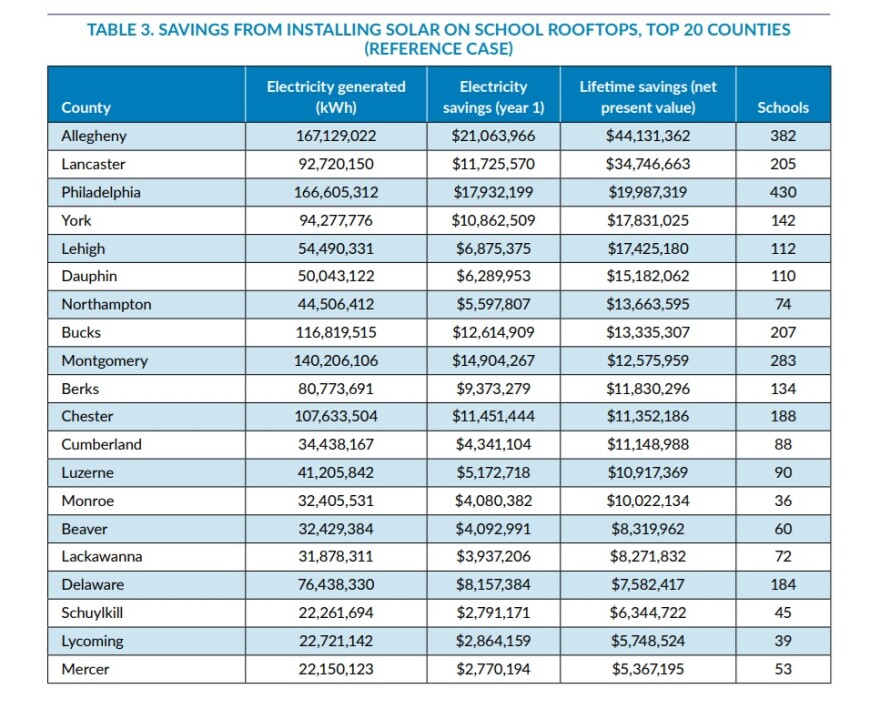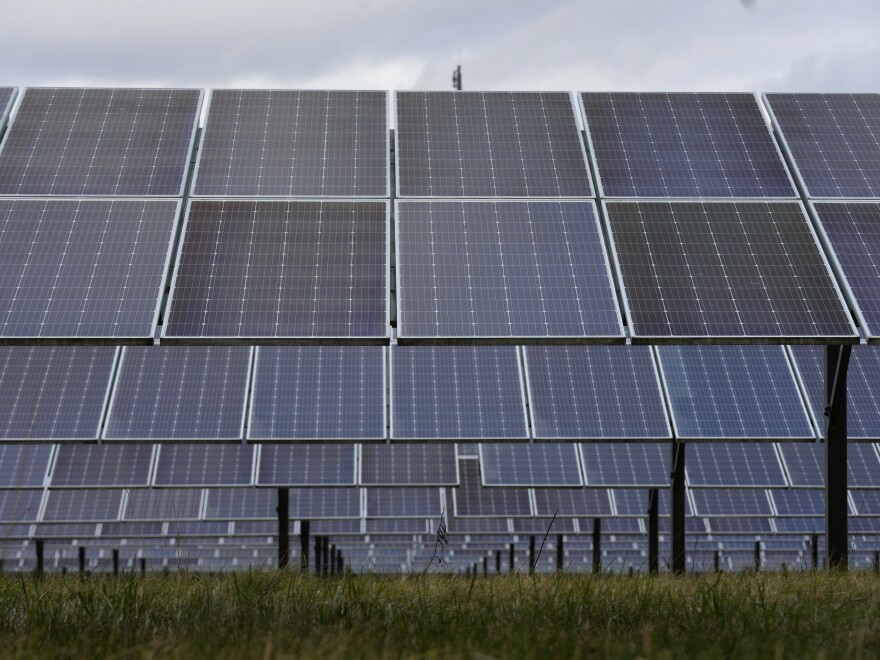BETHLEHEM, Pa. — Lehigh Valley schools could save more than $30 million in energy costs if officials add solar panels to their buildings, according to a new report.
“Our report found that using solar energy on schools right here in Northampton County and next door in Lehigh County could produce enough energy to power over 9,000 homes,” Faran Savitz, PennEnvironment Research & Policy Center's zero waste advocate, said.
"There's never been a better time for schools to go solar.”Faran Savitz, PennEnvironment Research & Policy Center's zero waste advocate
“Solar projects on schools in Northampton County alone could reduce harmful air pollution by over 25,000 tons of carbon dioxide.
"As our study shows, powering Pennsylvania schools with solar energy can pay dividends for local taxpayers, dividends for our health and dividends for our planet.
"There's never been a better time for schools to go solar.”
PennEnvironment on Wednesday released its new report, “Solar Schools for Pennsylvania: Repowering Education with Clean Energy,” during an event at the sculpture garden on the grounds of City Hall.
With flat, unshaded rooftops, schools often are ideal sites for solar panel installations, officials, advocates and experts said.
Adding solar panels not only would save districts money, but also cut carbon dioxide pollution, a key driver of climate change, the report said.
“To invest in everything solar, to invest in renewable in general, while hydroelectric is a fantastic option, geothermal is a fantastic option, putting those in the city of Bethlehem or the downtown of Easton or Allentown — it's not reasonable,” Easton Sustainability Coordinator Brandon Sullivan said.
“But solar is. You can put it on a roof top, you can put it in an open field or an open space. It has an ease of use that other forms do not have in urban areas.”

2K football fields worth of rooftop space
Savitz said the report’s findings are “incredible.”
Researchers found that with about 5,000 public, private, charter and parochial schools across the commonwealth, there are nearly 2,000 football fields worth of rooftop space that could be suitable for solar, according to the report.
“Our analysis finds that taking full advantage of Pennsylvania's potential for solar on schools could produce as much electricity as used by 187,000 typical homes every year,” Savitz said.
“We could reduce the climate warming, carbon dioxide pollution in our state by as much as taking nearly 300,000 cars off the road every single year.
"And we could save schools an estimated $342 million over the lifetime of these solar projects.”
The Lehigh Valley’s two counties, Lehigh and Northampton, ranked fifth and seventh, respectively, in the report’s list of top 20 counties for electricity savings from installing solar on school rooftops.

Schools in Lehigh County could potentially save more than $17 million over the lifetime of solar panels, while those in Northampton could save $13.6 million, according to the report.
Bethlehem Area School District already has installed solar panels at five of its schools: Freedom High’s solar canopies, the rooftop of East Hills Middle School, and outside of Spring Garden, James Buchanan and Farmersville elementary schools.
Describing BASD as “a leader in solar for schools,” state Rep. Steve Samuelson, D-135th District, said 100% of energy costs at James Buchanan are covered by solar.
“If you go across all 22 schools, the solar energy savings are significant, even with just five schools,” Samuelson said.
“So we're hopeful that we will continue to add to that proven success right here in the Bethlehem Area School District, and I hope that we can extend that all across the state.
“Makes sense for our environment, helps protect our climate. It also makes sure that we're all living in a healthy community, and it's a significant savings for our taxpayers.”
‘Solution to Pennsylvania's energy challenges’
To encourage more solar, officials called on state and federal agencies to make the process easier and more affordable.
The federal Clean Energy Investment Tax Credit, which can reduce the cost of solar energy systems for schools 30%, is being phased out, according to the report.
“Solar power can be a big part of the solution to Pennsylvania's energy challenges, producing clean, affordable electricity right on top of our neighborhood school buildings in the communities that we call home.”Faran Savitz, PennEnvironment‘s zero waste advocate
“Federal officials should reinstate and defend incentives for solar energy installations, including school-based projects, so that more schools can harness its power and go solar,” Savitz said.
“Solar power can be a big part of the solution to Pennsylvania's energy challenges, producing clean, affordable electricity right on top of our neighborhood school buildings in the communities that we call home.”
And while the commonwealth’s Solar for Schools program provides grants for school districts considering solar, other clean energy policies such as the Alternative Energy Portfolio Standards need an update, and schools need continued financial support, officials said.
The Solar for Schools Program is administered through the state Department of Community and Economic Development and funded through the Commonwealth Financing Authority.
The 2024-25 budget allocated $25 million for Solar for Schools grants.
Samuelson said he and other state legislators are advocating for another tranche of funding — $25 million, again — for the Solar for Schools program in the state budget.
“As you can imagine, there were many, many more school districts applying for that funding than funding was available,” Samuelson said.
“We are hopeful, and as these budget negotiations come to a conclusion, I hope in the near future that solar for schools will be put in there for a second year, and I would hope for years to come.”


